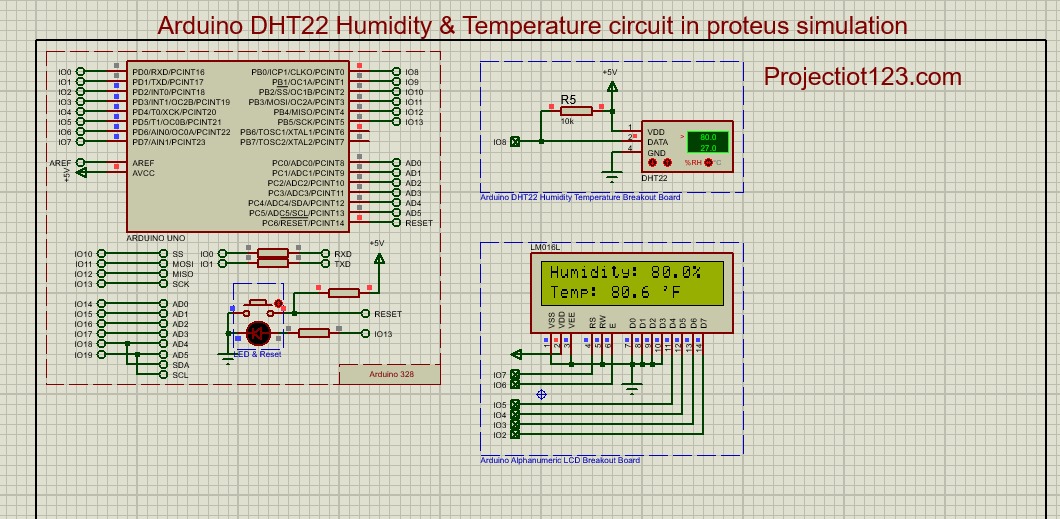Arduino DHT22 Humidity & Temperature circuit in proteus

Arduino DHT22 Humidity & Temperature circuit in proteus
In this article we will learn how to Interface Arduino with DHT22 Humidity & Temperature circuit in proteus.
In the last post we will learn how to Interface Arduino DHT11 Humidity & temperature low cost sensor circuit in proteus. You can visit our website,
I hope you appreciate my work, let’s discuss about today’s project.
Components:
- Arduino Uno
- LCD display
- IC (DHT22)
- Resistors (1k, 10k)
- LED
- Push button
- Jumper wires
Construction…
- Connect VDD pin of DHT22 with +5V through one side of resistor 10k
- Connect DATA pin of DHT22 with D8 pin of Arduino through 2nd side of resistor 10k
- Connect GND pin of DHT11 with GND
- Connect VCC pin of Arduino with +5V
- Connect one side of resistor with +5V
- Connect 2nd side of resistor with one side of push button and then connect them with Reset
- Connect 2nd side of push button with –ve side of LED and then connect them with GND
- Connect +ve side of LED with one side of resistor
- Connect 2nd side of resistor with D13 pin of Arduino
- Connect (VSS, VEE, RW, D0, D1, D2, D3) pins of LCD display with GND
- Connect VDD pin of LCD display with +ve
- Connect RS pin of LCD display with D7 pin of Arduino Uno
- Connect E pin of LCD display with D6 pin of Arduino Uno
- Connect D4 pin of LCD display with D5 pin of Arduino
- Connect D5 pin of LCD display with D4 pin of Arduino
- Connect D6 pin of LCD display with D3 pin of Arduino Uno
- Connect D7 pin of LCD display with D2 pin of Arduino Uno
Working…
The DHT22 is a popular sensor used to measure temperature and humidity. It’s also known as the AM2302 and is part of the DHT (Digital Humidity and Temperature) sensor family. The DHT22 operates using a digital signal protocol, making it easy to interface with microcontrollers and other digital devices.
Applications…
- Home Automation
- Weather Stations
- Greenhouse Monitoring
- Mushroom Farming
- Incubators
Advantages…
- Affordability
- Ease of Use
- Accuracy
- Digital Output
- Fast Response Time

